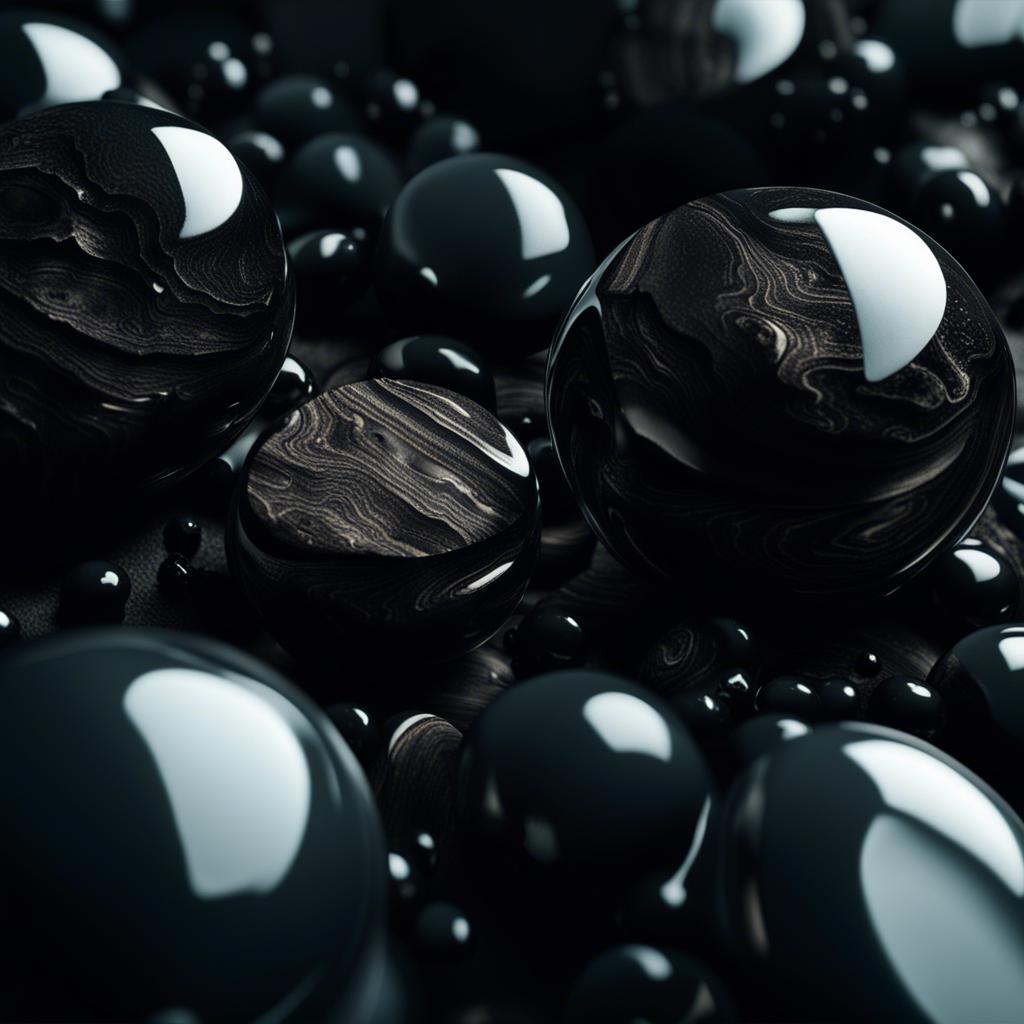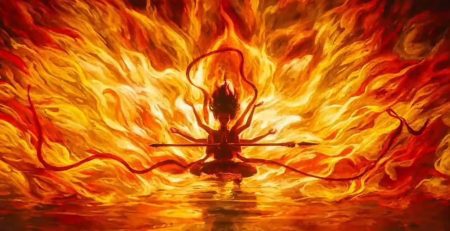
25
Apr
How Much is Obsidian: Exploring its Price and Significance
In a world where precious gems and rare stones fetch exorbitant prices, obsidian stands as a mysterious and intriguing outlier. This natural glass-like wonder, formed from volcanic lava, holds a rich history steeped in ancient cultures and modern admiration. But the burning question remains: just how much does obsidian cost? Join us as we delve into the depths of this enigmatic substance and explore its monetary value in today’s market.
Table of Contents
- How much does obsidian cost?
- Factors influencing the price of obsidian
- Different pricing for different types of obsidian
- Where to buy obsidian and how to compare prices
- Understanding the market value of obsidian
- Potential investment in obsidian
- Tips for getting the best deal on obsidian
- Q&A
- Concluding Remarks
How much does obsidian cost?
Obsidian is a naturally occurring volcanic glass that has been prized for centuries for its use in jewelry, tools, and decorative items. The cost of obsidian can vary depending on several factors, including its quality, size, and where it’s purchased.
On average, the price of obsidian can range from $2 to $10 per pound. However, rare or high-quality obsidian can fetch prices as high as $20 to $30 per pound. When purchasing obsidian, it’s important to consider the source and its authenticity, as some vendors may sell imitation or treated obsidian at lower prices. To ensure you’re getting genuine obsidian at a fair price, it’s best to purchase from reputable dealers or gemstone retailers.
Factors influencing the price of obsidian
Obsidian, a naturally occurring volcanic glass, comes in a variety of colors and is prized for its sharp edges and beautiful sheen. The price of obsidian can vary significantly depending on a range of factors, from its color and quality to its rarity and origin. Below, we’ll take a closer look at the key factors that influence the price of obsidian.
1. Color: The color of obsidian can greatly impact its price. Rare and vibrant colors such as rainbow, mahogany, and midnight lace obsidian often fetch higher prices due to their scarcity and aesthetic appeal.
2. Quality: The quality of obsidian, including its translucency, lack of impurities, and smooth texture, can also influence its price. Higher quality obsidian is more sought after and commands a higher price.
3. Rarity: Like many natural resources, the rarity of a particular type of obsidian can significantly impact its price. Rare types of obsidian, such as fire obsidian or golden sheen obsidian, are often priced higher due to their limited availability.
4. Origin: The origin of obsidian can also play a role in its pricing. Certain locations, such as the Obsidian Butte in California or the Lipari Islands in Italy, are known for producing high-quality obsidian, which can command a premium price.
Overall, the price of obsidian is influenced by a complex interplay of factors, including color, quality, rarity, and origin. Understanding these factors can help collectors and enthusiasts better appreciate the value of this unique and captivating material.
Different pricing for different types of obsidian
When it comes to the cost of obsidian, the price can vary depending on the type and quality of the obsidian. Here is a breakdown of the different types of obsidian and their respective pricing:
- Black Obsidian: This is the most common type of obsidian and is usually the most affordable. Due to its abundance, black obsidian typically has a lower price point compared to other types.
- Golden Sheen Obsidian: This type of obsidian exhibits a golden sheen or iridescence, which gives it a unique and beautiful appearance. As a result, golden sheen obsidian may be priced higher than black obsidian due to its rarity and aesthetic appeal.
- Snowflake Obsidian: Snowflake obsidian is characterized by white, snowflake-like inclusions within the black volcanic glass. The distinctive patterning of snowflake obsidian makes it a popular choice for jewelry and decorative items, and it may be priced higher than standard black obsidian.
It’s important to keep in mind that pricing for obsidian can also be influenced by factors such as size, shape, and overall quality. Additionally, factors like sourcing and market demand can affect the cost of obsidian as well. When purchasing obsidian, it’s recommended to do thorough research and consider all of these factors to ensure that you are paying a fair price for the type of obsidian you are looking to acquire.
Where to buy obsidian and how to compare prices
If you’re on the hunt for obsidian, there are several options for where to buy this unique and striking natural material. Whether you’re looking to add obsidian to your crystal collection or searching for a specific piece for jewelry making, it’s important to know where to find the best deals and how to compare prices. Here are some tips for where to buy obsidian and how to make sure you’re getting a fair price.
When it comes to purchasing obsidian, there are a few key places to consider. You can buy obsidian from:
- Online retailers: Websites like Etsy, Amazon, and specialty crystal shops often carry a wide variety of obsidian specimens and jewelry.
- Local rock and mineral shops: Many cities and towns have specialty stores that sell a range of crystals, including obsidian.
- Gem and mineral shows: These events are a great place to find unique and high-quality obsidian specimens directly from sellers.
| Obsidian Type | Price Range |
|---|---|
| Black Obsidian | $5 – $50 |
| Mahogany Obsidian | $10 – $75 |
| Snowflake Obsidian | $8 – $60 |
Before making a purchase, it’s important to compare prices from different sellers to ensure you’re getting the best deal. Consider factors like the size and quality of the obsidian, as well as any additional costs such as shipping or sales tax. By shopping around and doing your research, you can find the perfect piece of obsidian at a price that fits your budget.
Understanding the market value of obsidian
Obsidian is a naturally occurring volcanic glass that has been used for centuries in various cultures for making tools, weapons, and decorative items. Its market value is influenced by several factors that determine its price in today’s market.
Factors affecting the market value of obsidian:
- Quality: The quality of obsidian plays a significant role in its market value. High-quality obsidian with a smooth texture and minimal impurities commands a higher price.
- Rarity: Certain types of obsidian, such as rainbow obsidian or snowflake obsidian, are relatively rare and, therefore, have a higher market value due to their scarcity.
- Color: The color of obsidian, ranging from black to green, red, or even rainbow hues, can impact its market value. Some colors are more sought after and, therefore, command higher prices.
| Type of Obsidian | Market Value |
|---|---|
| Rainbow Obsidian | High |
| Snowflake Obsidian | High |
| Black Obsidian | Medium |
| Green Obsidian | Low |
When considering the market value of obsidian, buyers and sellers should take these factors into account to determine a fair price based on the quality, rarity, and color of the particular type of obsidian being traded.
Potential investment in obsidian
Obsidian is a naturally occurring volcanic glass that has been used for centuries for its beauty, strength, and potential for investment. As a collector’s item, obsidian can fetch a high price depending on its rarity and quality. For those considering , it’s important to understand how much it costs and what factors can influence its value.
The cost of obsidian can vary widely depending on several factors, including its size, quality, and rarity. Here are some general price ranges for different types of obsidian:
- Black Obsidian: Common black obsidian typically ranges from $1 to $10 per pound, depending on size and quality.
- Mahogany Obsidian: This type of obsidian, prized for its reddish-brown swirls, can cost between $5 and $20 per pound.
- Rainbow Obsidian: Rainbow obsidian, known for its colorful sheen, can range from $10 to $30 per pound.
It’s important to note that these prices are general estimates and can fluctuate based on market demand, rarity, and specific characteristics of the individual piece. When considering an investment in obsidian, it’s advisable to consult with experts or conduct thorough research to determine the current market value and potential for appreciation over time.
Tips for getting the best deal on obsidian
Obsidian, the striking black volcanic glass, is a popular material for jewelry and decorative items. However, it can vary widely in price depending on its quality and the seller. If you’re looking to get the best deal on obsidian, consider the following tips:
- Research the market: Before making a purchase, take the time to research the current market prices for obsidian. This will give you a good idea of what to expect and help you spot any overpriced items.
- Buy in bulk: If you’re planning on making multiple obsidian purchases, consider buying in bulk. Many sellers offer discounts for larger quantities, which can help you save money in the long run.
- Look for sales or promotions: Keep an eye out for sales or promotions at your favorite obsidian sellers. This can be a great way to score a deal on this beautiful volcanic glass.
By keeping these tips in mind, you can increase your chances of getting a great deal on obsidian. Whether you’re a jewelry maker or a collector, saving money on this stunning material is always a good idea.
Q&A
Q: What is obsidian and why is it valuable?
A: Obsidian is a naturally occurring volcanic glass that is known for its sharp edges and beautiful luster. It is valuable for its use in jewelry making, as well as in surgical scalpels and other cutting tools.
Q: How much does obsidian cost?
A: The cost of obsidian can vary depending on its quality, size, and color. On average, a small piece of obsidian can range from $5 to $20, while larger and more intricately shaped pieces can be priced at over $100.
Q: Where can one purchase obsidian?
A: Obsidian can be purchased from mineral and gemstone shops, as well as online retailers. It is also sometimes available at craft fairs and gemstone exhibitions.
Q: Is there a difference in the cost of different colors of obsidian?
A: Yes, there is a difference in cost based on the color of obsidian. Rare colors such as rainbow, blue, or mahogany obsidian can be more expensive than the more common black or brown varieties.
Q: Are there any factors that affect the cost of obsidian?
A: Yes, factors such as the source of the obsidian, its rarity, and any natural flaws or unique formations can affect its cost. Additionally, the craftsmanship involved in shaping and polishing the obsidian can also contribute to its price.
Concluding Remarks
In conclusion, the cost of obsidian varies depending on factors such as size, quality, and rarity. While it can be found for free in certain locations, high quality and rare obsidian can fetch a hefty price in the market. Whether you are a collector, a jewelry maker, or simply interested in the unique properties of this volcanic glass, knowing the market value of obsidian can help you make informed decisions. So, next time you come across a piece of obsidian, remember that its worth goes beyond monetary value, and appreciate the beauty and history encapsulated within its dark, enigmatic surface.









